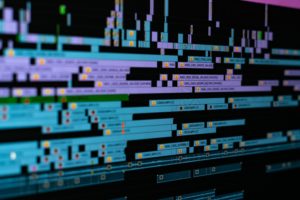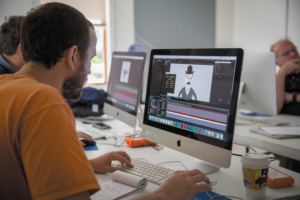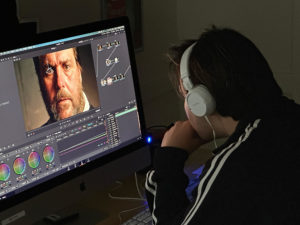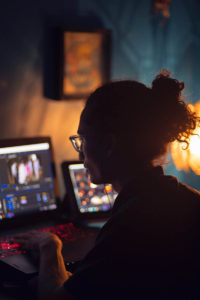Workshops
Immerse yourself in learning the tools, techniques and methodologies of film post-production in this dynamic editing intensive.
There are no available registration dates at this time.
Note: This workshop will be held in a live, online format utilizing the Zoom platform.
Class meets on Tuesdays & Thursdays, Aug 1-24 from 2-5pm ET.
This intensive takes you deep into the aesthetics, tools, and workflow involved in film editing and post-production. You’ll explore the full editing process, from workflow and file management to cutting and storytelling, and finish the cycle with a theoretical examination of editing as an art form, led by a career editor in the film and television industry.
This four-week track includes Digital Workflow, Adobe Premiere, Adobe After Effects, or Davinci Resolve, and finishes with “The Art of Editing”.
Classes in this intensive:
Share This

Digital Workflow
Gain a strong understanding of the technical theory and organizational workflow that is foundational to a successful editing process. The course covers how to properly set up a project, and keep media, assets, and project files organized throughout the post-production process. Students examine various types of footage with different resolutions, frame rates, and codecs, and explore the processes and possibilities of working with each. The course will discuss the purposes of the various post-production softwares, and how they work in conjunction with one another. Students will finish the week fully ready to start working with footage in Adobe Premiere, and with a strong foundational understanding of the processes that go into a post-production workflow.

Adobe Premiere
Adobe Premiere has become the preferred software choice for many editors. This course will give students a robust introductory understanding of Premiere and its interface. Students will learn window layout and customization, folder structure, sequence creation, keyboard shortcuts, 3-point editing, trimming tools, and navigation within a project. The course will also cover building and fine-tuning a rough cut, working with audio and effects, creating titles and graphics, the basics of color correction, and exporting and sharing your projects. Students will have open lab time to practice the techniques learned, and to work with the instructor one-on-one.

Adobe After Effects (3rd Week Elective Option)
Knowledge of basic Motion Graphics and Animation is desired by most production companies and employers when seeking candidates for editor positions. Adobe After Effects continues to be the industry standard software for compositing and motion graphics. In this course, students gain an understanding of visual effects features such as keying and compositing, layers, blending modes, masks, and alpha channels. Core animation concepts such as keyframes and parenting are covered in-depth, as well as kinetic typography.

DaVinci Resolve (3rd Week Elective Option)
With the rapidly evolving technology in today's cinema cameras and digital imaging, editors with a strong understanding of color correction and color grading will stand out in the crowd. This workshop provides students with a strong foundation in DaVinci Resolve, the standard software for professional colorists across the industry. (Resolve is also developing increasingly powerful tools in non-linear editing and effects). Utilizing a workshop atmosphere in combination with lectures, demonstrations and projects, students will take their first steps toward a robust technical understanding of the art and craft of color correction and grading as used in professional filmmaking.

The Art of Editing
Through screenings, theory discussions, and analysis of films, led by an accomplished editor, students explore how pacing, shot selection, rhythm, and juxtaposition can be used to create emotional impact and advance a story. The workshop examines how good editors approach their footage, and what actually makes a cut effective. Over the course of the week, they’ll edit a series of different types of scenes, while considering their motivation for each cut. Rough edits will be critiqued and discussed in class daily. The combination of hands-on experience, and discussion of aesthetics help students develop a new perspective into the craft of editing.

